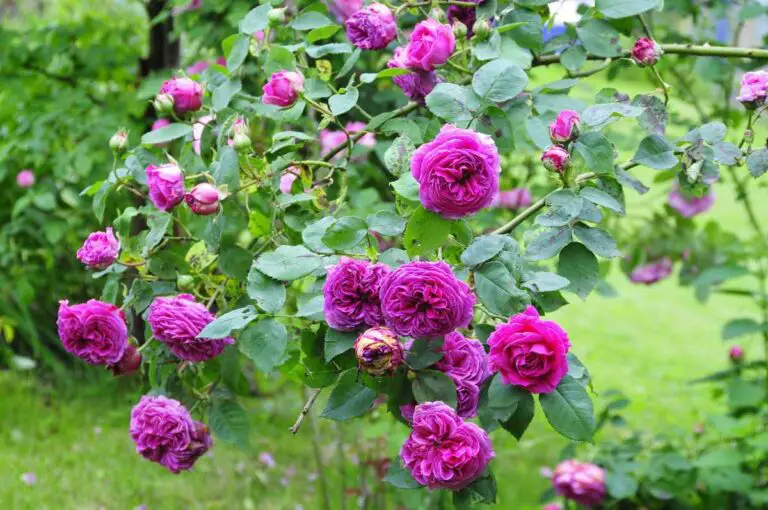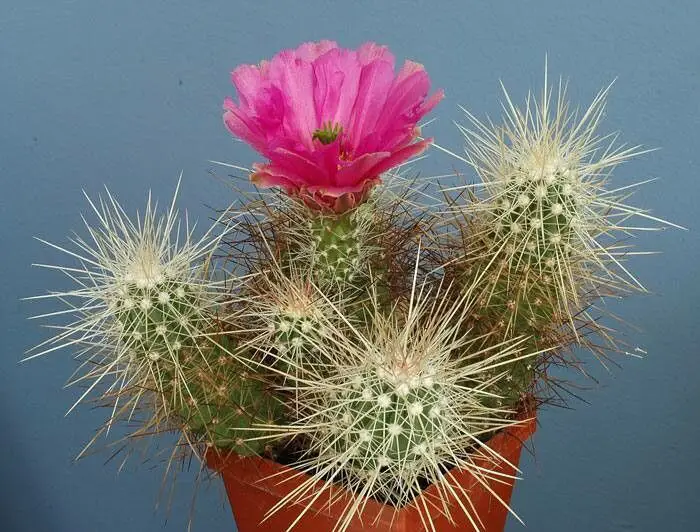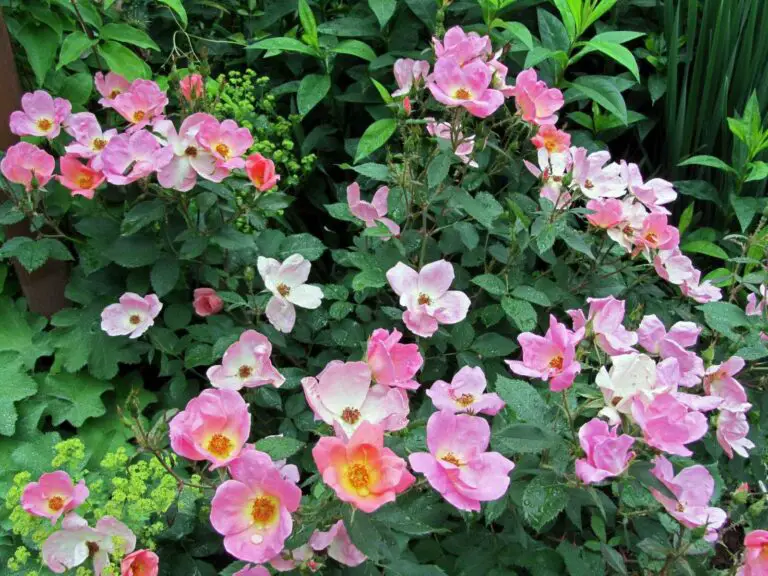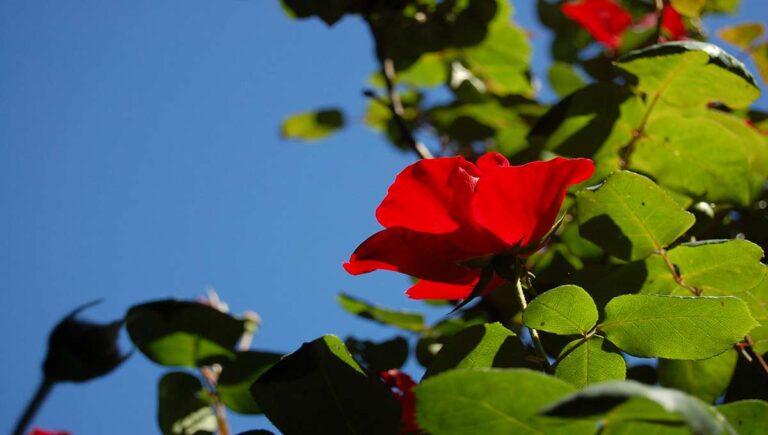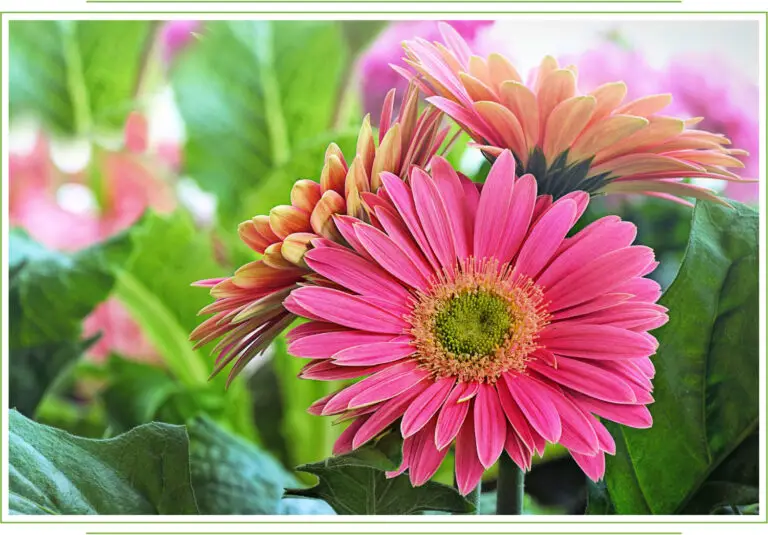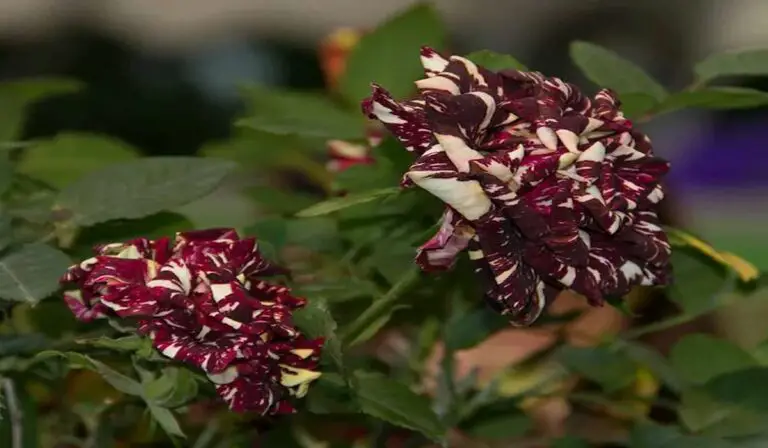Introduction
The Chinese emperor jasmine plant is a beautiful addition to any garden. Known for its stunning, fragrant flowers, this plant has captured the hearts of gardeners around the world. Whether you’re a seasoned gardener or just starting out, the Chinese emperor jasmine can bring a touch of elegance and a delightful scent to your outdoor space.
This plant is not only lovely to look at but also quite easy to care for, making it a great choice for many homes. Its lush green leaves and delicate white flowers can brighten up any corner of your garden. Plus, the sweet aroma of its blossoms is sure to enhance your garden’s ambiance.

In this guide, we’ll explore everything you need to know about the Chinese emperor jasmine plant. From its origins and characteristics to detailed care instructions and tips for encouraging those gorgeous flowers, we’ve got you covered. Whether you’re planting it in the ground or growing it in a pot, you’ll find all the information you need to enjoy this charming plant to the fullest.
Short Overview Chinese Emperor Jasmine
| Aspect | Details |
|---|---|
| Common Name | Chinese Emperor Jasmine |
| Scientific Name | Jasminum sambac |
| Origin | Asia (particularly China and India) |
| Plant Type | Evergreen shrub or vine |
| Height | Can grow up to 8-10 feet when trained as a vine |
| Sunlight | Prefers full sun, tolerates partial shade |
| Soil | Well-draining, slightly acidic to neutral pH (6.0-7.5) |
| Watering | Keep soil consistently moist but not waterlogged |
| Blooming Period | Mainly summer, but can bloom in other seasons with proper care |
| Flowers | Small, white, star-shaped, fragrant |
| Fertilizing | Monthly during the growing season with balanced fertilizer |
| Pruning | After flowering, to maintain shape and encourage new growth |
| Pests/Diseases | Common pests include aphids, spider mites, and whiteflies; fungal diseases like root rot can occur |
| Uses | Garden borders, climbing structures, ground cover, container gardening |
| Special Features | Highly fragrant flowers, versatile in landscaping |
Understanding the Chinese Emperor Jasmine Plant
History and Origin
The Chinese emperor jasmine plant has a rich history. It originally comes from Asia, where it has been grown and admired for centuries. This plant is especially popular in China and India, where it often features in traditional gardens and cultural celebrations. Over time, it has spread to other parts of the world, thanks to its beauty and lovely scent.
Botanical Characteristics
Appearance
The Chinese emperor jasmine plant is a real eye-catcher. It has glossy, dark green leaves that provide a lush background for its beautiful flowers. The leaves are oval-shaped and have a smooth texture, adding a touch of elegance to the plant’s overall look.
Growth Habit
This plant can grow as a vine or a shrub, depending on how you train it. If you let it climb, it can reach impressive heights, perfect for covering trellises or walls. As a shrub, it maintains a more compact and bushy shape, making it ideal for garden beds or containers.
Flowers
One of the most enchanting features of the Chinese emperor jasmine plant is its flowers. They are small, white, and star-shaped, often growing in clusters. These flowers are not just pretty to look at—they also have a wonderful, sweet fragrance that can fill your garden with a delightful scent. Typically, the plant blooms in the summer, but with the right care, you might enjoy flowers at other times of the year as well.
By understanding the history and characteristics of the Chinese emperor jasmine plant, you can appreciate why it’s such a beloved addition to gardens worldwide. Its combination of attractive foliage and fragrant flowers makes it a standout choice for any gardening enthusiast.

Chinese Emperor Jasmine Plant Care
Optimal Growing Conditions
Sunlight
The Chinese emperor jasmine plant loves sunlight. It thrives best in full sun, which means it needs about six to eight hours of direct sunlight each day. If you live in a very hot climate, a bit of afternoon shade can help protect it from the intense heat.
Soil
This plant isn’t too picky about soil, but it does best in well-draining soil. A mix of garden soil with some sand or compost works great. The soil should be slightly acidic to neutral, with a pH level between 6.0 and 7.5. Good drainage is important because it prevents water from sitting around the roots, which can cause rot.
Watering
Watering your Chinese emperor jasmine plant properly is key to keeping it healthy. The soil should be kept consistently moist but not soggy. In the growing season (spring and summer), water the plant regularly to keep the soil evenly moist. During the fall and winter, reduce the watering frequency, allowing the soil to dry out a bit between waterings. Always check the top inch of soil—if it feels dry, it’s time to water.
Planting and Propagation
Planting
Planting the Chinese emperor jasmine plant is straightforward. Choose a sunny spot with well-draining soil. Dig a hole twice the size of the plant’s root ball. Place the plant in the hole and fill it with soil, making sure the top of the root ball is level with the ground. Water the plant well after planting to help it settle in.
Propagation
You can easily propagate this plant using cuttings. In late spring or early summer, take a 4-6 inch cutting from a healthy plant. Remove the lower leaves and dip the cut end in rooting hormone. Plant the cutting in a pot filled with a mix of sand and peat. Keep the soil moist and place the pot in a warm, bright area but out of direct sunlight. Roots should develop in a few weeks, and the new plant will be ready to transplant into the garden.
Fertilizing and Pruning
Fertilizing
Feeding your Chinese emperor jasmine plant helps it grow strong and produce lots of flowers. Use a balanced, water-soluble fertilizer once a month during the growing season. Look for a fertilizer with equal parts nitrogen, phosphorus, and potassium (like a 10-10-10 formula). Avoid over-fertilizing, as too much can harm the plant.
Pruning
Pruning keeps your plant looking its best and encourages more blooms. After the plant finishes flowering, trim back any dead or overgrown branches. This helps the plant maintain a nice shape and encourages new growth. Regular pruning also prevents the plant from becoming too leggy.
Pest and Disease Management
Like all plants, the Chinese emperor jasmine can sometimes have problems with pests and diseases. Common pests include aphids, spider mites, and whiteflies. If you notice any of these, spray the plant with a mixture of water and a little dish soap, or use an insecticidal soap.
To prevent diseases, ensure your plant has good air circulation and avoid over-watering. Fungal diseases, like root rot, can occur if the soil stays too wet. If you see any signs of disease, like discolored leaves or stunted growth, treat the plant with a fungicide and improve the growing conditions.
By following these care tips, you can enjoy a healthy and vibrant Chinese emperor jasmine plant in your garden. Its beautiful flowers and lovely fragrance will reward you for your efforts.

Chinese Emperor Jasmine Plant Flowers
Flower Characteristics
The Chinese emperor jasmine plant flowers are truly a delight. They are small, usually about an inch in diameter, and have a lovely star shape. The petals are pure white, which stands out beautifully against the dark green leaves. These flowers often grow in clusters, creating a lush and elegant display. Each flower has a delicate, almost waxy texture, adding to its charm.
Typical Blooming Period
The blooming period for the Chinese emperor jasmine plant is typically in the summer. However, with the right care, you might see flowers appear in other seasons as well. The key to enjoying blooms year-round is maintaining a healthy plant with consistent care.
Aromatic Appeal
One of the most enchanting aspects of the Chinese emperor jasmine plant flowers is their fragrance. The scent is sweet and strong, yet not overpowering. It’s a classic jasmine fragrance that many people find soothing and delightful. This aroma can fill your garden, creating a relaxing and inviting atmosphere.
Cultural Significance and Uses
In many cultures, jasmine flowers are highly valued not just for their beauty but also for their fragrance. In China and India, these flowers are often used in religious and cultural ceremonies. The Chinese emperor jasmine plant flowers can also be used to make homemade perfumes or to scent rooms naturally. Simply placing a few flowers in a bowl of water can refresh a room’s ambiance.
Encouraging Blossoms
Proper Care
To encourage your Chinese emperor jasmine plant to produce lots of flowers, it’s important to provide proper care. Ensure the plant gets enough sunlight, as light is crucial for flower production. Regular watering, while avoiding waterlogged soil, helps keep the plant healthy and ready to bloom.
Pruning and Fertilizing
Pruning also plays a big role in promoting blossoms. After the flowering period, prune back the plant to remove spent flowers and encourage new growth. This not only keeps the plant looking tidy but also stimulates the production of more flowers. Fertilizing with a balanced, water-soluble fertilizer every month during the growing season provides the necessary nutrients for flower development.
Seasonal Adjustments
Adjusting your care routine with the seasons can also help. In the spring, as the plant begins to grow more actively, increase watering and start regular fertilizing. As summer approaches, make sure the plant has enough sunlight and consider adding some mulch around the base to retain moisture. In the fall and winter, reduce watering and allow the plant to rest, preparing it for the next blooming cycle.
By following these tips, you can enjoy the beautiful and fragrant Chinese emperor jasmine plant flowers throughout the year. Their stunning appearance and delightful scent will make your garden a serene and enchanting place.
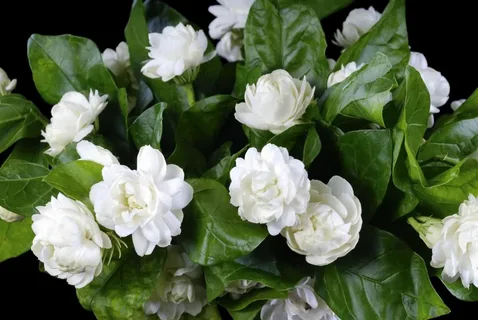
Landscaping with Chinese Emperor Jasmine
Design Ideas
Garden Borders and Hedges
The Chinese emperor jasmine plant makes a fantastic addition to garden borders and hedges. Its lush, dark green foliage provides a beautiful backdrop for other plants. When it blooms, the white flowers add a striking contrast, making the border or hedge stand out. Plant several in a row to create a natural fence that’s both attractive and fragrant.
Climbing Structures
If you have a trellis, pergola, or garden arch, the Chinese emperor jasmine plant can be trained to climb these structures. As a vine, it can reach impressive heights, covering the structure with its dense leaves and pretty flowers. This not only enhances the vertical space in your garden but also provides a lovely shaded area when the plant is in full bloom.
Ground Cover
For larger garden areas, you can use the Chinese emperor jasmine plant as a ground cover. Its spreading habit allows it to cover the ground effectively, creating a carpet of green leaves and white flowers. This is especially useful for filling in gaps in the garden or covering bare spots.
Companion Plants
Pairing with Colorful Blooms
The Chinese emperor jasmine plant pairs well with colorful flowering plants. Consider planting it alongside roses, hibiscus, or bougainvillea. The white flowers of the jasmine provide a stunning contrast to the vibrant colors of these blooms, creating a visually appealing garden display.
Complementing Foliage Plants
Plants with interesting foliage, like hostas or ferns, also make great companions for the Chinese emperor jasmine plant. The dark green leaves of the jasmine contrast nicely with the varied textures and shades of foliage plants, adding depth and interest to your garden design.
Container Gardening
Choosing the Right Container
Growing the Chinese emperor jasmine plant in a container is a great option, especially if you have limited garden space or want to bring the plant indoors. Choose a large container with good drainage to give the plant enough room to grow. Terra cotta pots are a good choice because they allow the soil to breathe.
Soil and Planting
Use a well-draining potting mix, ideally one that’s slightly acidic to neutral. When planting, place the jasmine in the center of the pot, and fill in around it with soil. Make sure the top of the root ball is level with the top of the soil. Water the plant thoroughly after planting.
Care Tips
Container-grown Chinese emperor jasmine plants need regular watering, especially during the growing season. Check the soil moisture frequently and water when the top inch of soil feels dry. Fertilize monthly with a balanced, water-soluble fertilizer to keep the plant healthy and encourage blooming.
Benefits of Container Gardening
Mobility
One of the main benefits of growing the Chinese emperor jasmine plant in a container is mobility. You can move the plant to different locations depending on the season or your garden design needs. During harsh weather, you can bring the plant indoors to protect it.
Space Efficiency
Container gardening allows you to enjoy the beauty and fragrance of the Chinese emperor jasmine plant even if you have a small garden or a balcony. It’s a great way to maximize your gardening space and add a touch of nature to any area.
By incorporating the Chinese emperor jasmine plant into your landscape design, you can create a beautiful, fragrant, and versatile garden space. Whether you use it as a border plant, a climber, ground cover, or in a container, this plant will bring elegance and a delightful scent to your outdoor living area.
Conclusion
The Chinese emperor jasmine plant is a wonderful addition to any garden. With its lush green leaves and fragrant white flowers, it can bring beauty and a delightful scent to your outdoor space. Whether you’re growing it as a vine on a trellis, using it as a ground cover, or enjoying it in a container, this plant is sure to please.
Caring for the Chinese emperor jasmine plant is straightforward. Give it plenty of sunlight, water it regularly but don’t let the soil get soggy, and feed it with a balanced fertilizer during the growing season. Pruning helps keep the plant healthy and encourages more blooms. Keep an eye out for pests and treat any problems promptly to keep your plant thriving.
The flowers of the Chinese emperor jasmine are not only beautiful but also bring a sweet fragrance to your garden. With proper care, you can enjoy these lovely blossoms throughout the year. Their simple elegance and captivating scent make them a favorite among gardeners.
When it comes to landscaping, the Chinese emperor jasmine plant is versatile. It can enhance garden borders, climb structures, cover ground, and grow well in containers. Pair it with colorful flowering plants or interesting foliage plants to create a stunning garden display.
In summary, the Chinese emperor jasmine plant is a delightful and easy-to-care-for plant that offers many benefits. Its beauty, fragrance, and versatility make it a perfect choice for any garden. By following the care tips and design ideas shared in this guide, you can enjoy the many joys this lovely plant brings to your outdoor space.

